The pandemic has claimed more than 2.5 million lives and reshaped countless others. COVID-19 has taken so much from the world, but it has also given architects the opportunity to reimagine a safer future.
COVID-19 Inspires 'Office of the Future'
WATCH ANYTIME FOR FREE
Stream NBC10 Boston news for free, 24/7, wherever you are. |
There's so much energy and community that we get out of the space that we inhabit together.
Kelly Walstrum, architect at STUDIOS Architecture
Get updates on what's happening in Boston to your inbox. Sign up for our News Headlines newsletter.
To understand how COVID-19 is changing modern-day design, the NBC Bay Area Investigative Unit spoke with nine Bay Area-based architects from six different firms: Ashley Roi Jenkins Design, STUDIOS Architecture, PWP Design, SWA, William Duff Architects, and Bohlin Cywinski Jackson. Their client lists include some of the most well-known corporations in the world including Google, Apple, eBay, Airbnb, Twitter, and more.

Since the start of the pandemic, many of those architects have received a steady stream of requests from clients wanting to rebuild or renovate their current office spaces in order to safely lure back nervous employees and customers. The pandemic has raised the bar and the stakes for architects, who are now being hired to reinvent the modern-day home, office, and more.
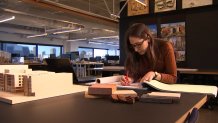
"The reason to come to work still exists, but perhaps we need to remind ourselves why we did come to work," said Kelly Walstrum, an architect with the San Francisco-based firm STUDIOS. "I think especially in the Bay Area, employees had a high expectation for their workplace -- it's sort of setting the precedent."
Walstrum is among those architects receiving frequent client requests for new design solutions to address a changing world. To showcase how the pandemic is altering the needs of employers and employees, Walstrum and her colleagues designed a "virtual office tour" to highlight what the workplace of the future might look like post pandemic.

Higher Rates of Remote Working Likely to Remain Indefinitely
Buildings, that would have been deemed perfectly acceptable prior to the pandemic, are now being slated for major renovations -- that's in large part due to the fact that tens of millions of Americans are expected to continue working from home for years. The lack of workers returning to the office on a consistent basis means the endless row of office cubicles will likely be phased out. Spaces will also be designed with a focus on flexibility, so areas can be easily transformed to fit the specific needs of the day, whether that includes a small brainstorming meeting, medium-sized collaboration session, or a large gathering. Work stations will be built to be a lore more versatile and will also feature a strong focus on access to fresh air.
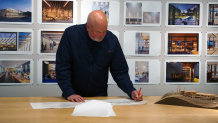
“I think the way people think about space and their needs for space is going to change in significant ways,” said Greg Mottola, principal architect at Bohlin Cywinski Jackson.
National Investigations
A lot of our clients now are...seeing a real importance in creating spaces that promote wellness, promote some amount of physical activity, some amount of connection to the outside, connection to nature, places for people to recharge.
Greg Mottola, architect with Bohlin Cywinski Jackson
Architects are now tasked with finding ways to make collaborating safe again both for their clients as well as their own design teams.
“It’s so much harder to design with a group when we're all remote versus if you're sitting around a table and you're looking at drawings together, you're testing ideas together,” said Mottola. “I think a lot of companies are grappling with that.”
Number of Americans Working Remotely More than Doubled During the Pandemic
Prior to the pandemic, about 21 percent of the U.S. workforce engaged in some sort of remote work. Today, however, 57 percent of working Americans are remote, according to recent survey data by Upwork. With people only coming into the office as needed or on a part-time basis, it may no longer make sense for individual workers to continue having their own permanently assigned office space.
“Desks are likely to be shared rather than owned by individuals,” said Antonia Cardone, a senior managing director at Cushman & Wakefield who specializes in helping employers make the best use of their office space.
The commercial real estate firm recently surveyed 60,000 employees from 100 countries and found 78% of workers said their jobs should embrace some combination of remote working post pandemic.
How do we shape this home into something that we are excited to be in seven days a week, twenty four hours a day?
Stacy Ban, San Francisco homeowner who renovated her house during the pandemic
"We've seen in past, particularly at the most senior levels of organizations, a real reluctance to let people be flexible and choose where they work and through this enforced experience, this global experiment of sending everybody home, we've all had to learn and we've learned relatively successfully," Cardone said. "People feel trusted to continue this way, so they will expect the leadership of the organization to continue allowing this kind of flexibility."

To accommodate remote working on a longer-term basis, Cardone believes state-of-the-art video conferencing technology will need to become an essential aspect of the modern-day office.
“We will have more of these other collaborative spaces, larger, better appointed meeting rooms, more technology in those rooms, such that the experience for people who are in the room is equivalent to the people who are not in the room and participating via video conference,” said Cardone. “Gone are the days of the bar cart with the TV and the $30 camera duct-taped to the top, calling that the video conference suite."
Cardone also stresses that virtual conference meetings, which have become the norm during the pandemic, have fundamentally changed the culture of the workplace, ushering in a new “office democracy.”
“We've had this amazing digital experience where everybody has been an equal face on the screen through our video conferencing on laptops," she said. "We're going to expect that equality to continue."
'Coronavirus Killer Robot' and Other COVID-Inspired Innovations
Architects also expect office buildings to begin heavily relying on voice-activated technology and smart phones to allow employees to navigate much of their work day without touching anything. Motion-sensor faucets and automatic doors will become even more common, while other inventions are aimed at eliminating contaminants from the office.
The New York City-based company PathSpot boasts that its hand scanning device can detect which employees in the office may be walking around with contaminants on their fingers. Users place their hands underneath the scanner and, according to the company's website, the device then takes just two seconds to determine whether a person's hands are covered in "harmful contaminants that spread common illnesses."
Ava Robotics developed a so-called "Coronavirus Killing Robot," which works while employees are away - blasting the office with ultraviolet light to kill viruses.
A Minnesota company, Digi-Key, which distributes electronics, engineered its own “sanitation tunnel” to disinfect components before employees handle them.
And for those who are working at home in noisy environments, there’s an artificial intelligence app, created by Krisp Technologies in Berkeley, that will eliminate unwanted noise during your online chats.
Some Restaurants Toss Traditional Dine-In Model
Businesses that cater to the public are also relying on new designs so they can reassure customers it is safe to shop and dine inside.
“In the case of, say, a restaurant or a retail shop, they need their customers to come back,” said Mottola, “and they need to come back in a way where they feel safe...and the desire to shop and have that experience outweighs any fear they have.”
But some restaurants are now ditching the traditional “dine-in” model for purely pickup and delivery since online food orders during the pandemic are up 663 percent, according to the NPD Group and Crest Foodservice Market Research.
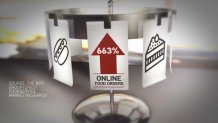
"COVID has accelerated an existing trend towards convenient food options," said John Goldsmith, who opened a pick up/delivery kitchen in Lafayette just outside Walnut Creek. "Restaurants and consumers are starting to embrace takeout/delivery as the default, just as Amazon/e-commerce eventually went from niche to mainstream."
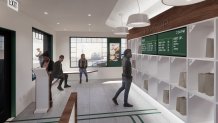
Pandemic-Inspired Home Renovations
COVID renovations are building momentum on the homefront, too. Stacy Ban just finished remodeling her San Francisco home. “There are elements of the renovation that we did with COVID in mind,” said Ban. Her kitchen now has non-porous countertops that don’t allow air or water to seep in, so that molds and viruses can’t live inside. “Super easy to clean,” she said.
Cabinets open at the push of a button, so there are no handles to hold. There’s also a separate charging drawer for electronics. Since cell phones and other personal gadgets are known to collect germs, cell phones are stored away from any frequently used countertops.
“We wanted to feel safe in our home,” said Ban, who also renovated her home office. "It's like how do we create this place for us where it's an escape from the everyday world and it's a place that we're enjoying."
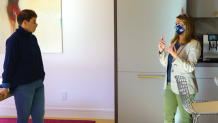
COVID Conscious Designs can be Costly
Pandemic-inspired designs, however, aren’t cheap. COVID conscious designs can easily cost homeowners hundreds of thousands of dollars.
Stacy Ban says it was worth the expense.
“We weren't going on vacations,” she said. “We weren't going out to dinners. We weren't going to happy hours, not shopping as much because we had no place to go, and so it kind of was like, oh, let's take some of those dollars spent elsewhere and invest it into a home that excites us.”
Creating good design is rarely easy, but Greg Mottola says nowadays it is more rewarding.
"We get to help shape the future of our cities,” he said. “And if we get it right, we're going to address some really fundamental issues that I think cities across the country grapple with.”



